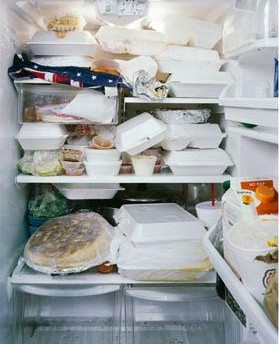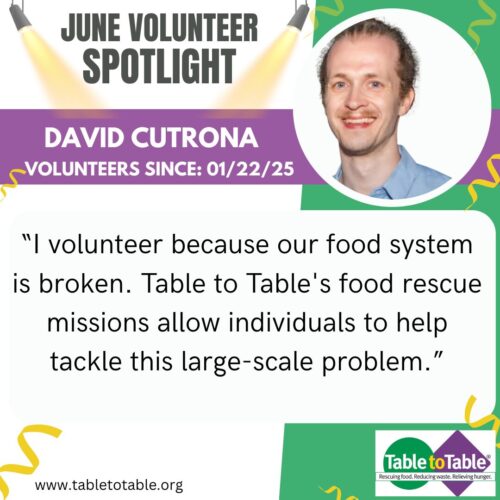
Blog
Reducing Food Waste at Home…
We’ve all heard the stat…40% of food in the US is wasted. Thrown away. Trashed. We posted here last month many of the ways food is wasted in grocery stores and food service but, consider this statistic; of that 40%, 61% occurs in the home. For a family of 4 that amounts to $114-$119 per month in out of pocket costs. Our shopping habits, storage methods, over-buying, portion size, and unwitting lack of knowledge about spoilage and what happens when we throw away our leftovers are generating ripple effects of waste through precious resources, driving up the costs of everything from food to water to gas. An average of 23 pounds of food per month, per person, is thrown away – a 50% increase from 1970. A recent study by the National Institute of Health found that a quarter of the food squandered would provide 3 meals per day for 43 million people.
Food budgets are one of the smallest pieces of our spending pie so there is little incentive to shop with greater thought toward food waste versus the cost. However, the impact of reducing our food waste at home is significant enough to make it worth the effort. Consider not only the costs, but also the environmental effects. Landfills are largely filled with food waste, which converts to methane gas that is 25% more powerful than carbon dioxide, making it far more powerful at depleting the ozone layer. Every ton of food wasted results in 3.8 tons of greenhouse gas emissions. A UK report estimates if food scraps were removed from landfills it would be the equivalent of removing 1/5 of cars and their emission from the roads. In processing New York City’s waste alone, garbage trucks make 250,000 trips throughout the city and the same number of long haul trips out of state to landfills. The average truck, with its frequent stops and idling, gets around 3 MPG.
Growing, packaging and transporting enough food to feed us and satisfy our need for abundance reduces resources like land, fertilizer, water, gas, paper and plastic. Think take-out, to-go, leftovers, displays, the need for perfection in shape, color and size, and you get an idea of the impact waste has on our food sources.
Fortunately, there are a number of simple ways to have a dramatic impact on food waste right in your own home. Here are some thoughtful ideas to create a less wasteful food environment:
- Shop your refrigerator:
- Take a quick inventory of what is already in your refrigerator before heading to the store or online to shop.
- Leftovers and take-home food stay fresh longer than we anticipate, usually up to 3-4 days.
- Ask about smaller portion sizes or share an order to reduce take-home food. This will not only save on food waste but saves on resources. If you take it home then throw out the food and the container, it’s a double waste whammy.
- Keep in mind that sell-by and use-by dates on food are arbitrary. There are no federal guidelines, so that milk is probably okay for several days past the sell-by date.
- Plan Your Menus and Shop More Often:
- Make a list and stick to it to help prevent that experiment from languishing on the shelf in the back until it’s a science project waiting for the trashcan.
- Buy what you need for meals for just a few days at a time and shopping more often helps control over buying and waste.
- Prepare what you need for the number of people being fed at any given meal. This will reduce the amount of leftovers lurking in the refrigerator.
- Home delivery services are available in most areas, making it easier to find the time to shop more often right from your desk or laptop, even your smartphone.
- Avoid Bulk Purchases:
- They’re tempting and a great deal if you will use it all prior to spoilage. If it can’t be used for multiple purposes like stocks, preserves, freezing, etc. then they will not save money and will contribute to the excess food in landfills.
- If the Food is Still Safe to Eat:
- Use leftovers or food that is on the verge of “turning” for stocks, soups and stews.
- Croutons can be made from stale bread and bagels.
- Fruits that are ripe can be used for smoothies and jams.
- As the popularity of juicing increases, ripe fruits and vegetables are perfect to use.
- One of the newest trends in food this year is pickling, use ripened food and learn how to preserve them using vinegar and spices!
- Composting is Easy:
- Small composting units are even available for indoors.
- It creates a compound that has important nutrients for soil and saves on food waste and landfill refuge.
- Designate One Dinner Each Week as a “Use-it-Up” Meal:
- Instead of cooking a new meal, look around in the cupboards and refrigerator for leftovers and food that might otherwise get overlooked but is on the verge of going bad.
- Check cabinets and refrigerator doors for almost expired products and use them up.
- Leftovers and to-go boxes can be reheated or used to create new dish.
As an experiment, keep a log for a week of food that is thrown away in the household. Then apply all or some of the tips above and log that week’s food waste. There should be a reduction in food waste without much effort. Imagine how this new awareness will flourish and contribute to solving what is a national crisis.
Table to Table is working daily with food purveyors and families to redistribute food that would otherwise be wasted to help feed our hungry neighbors. But every little bit that can be done on an individual basis helps in the battle to diminish food waste. Learn more about how we rescue food at https://tabletotable.org/.
#foodrescue #foodwaste #TabletoTable #compost #pickling #waste
More From News
July 3, 2025
How Much Food Will Go Uneaten on the Fourth of July?
June 30, 2025
David Cutrona: Volunteer Spotlight
REAL PEOPLE, REAL STORIES.
June 24, 2025
Elementary School Students Honored
More students are working to end hunger and reduce food waste. Students at Godwin and Highland Elementary schools in Midland Park were...
June 19, 2025
Leonia Students Donate Hundreds of Pounds of Produce
Every little bit counts. Second-graders at Anna C. Scott Elementary School in Leonia held a fresh produce drive for Table to Table...
May 23, 2025
Saddle River Inn Named Among the 25 Most Essential Restaurants in North Jersey
Take your best shot at fighting hunger. Join us for the 9th Annual Table to Table Golf Classic at the Preakness Hills...













